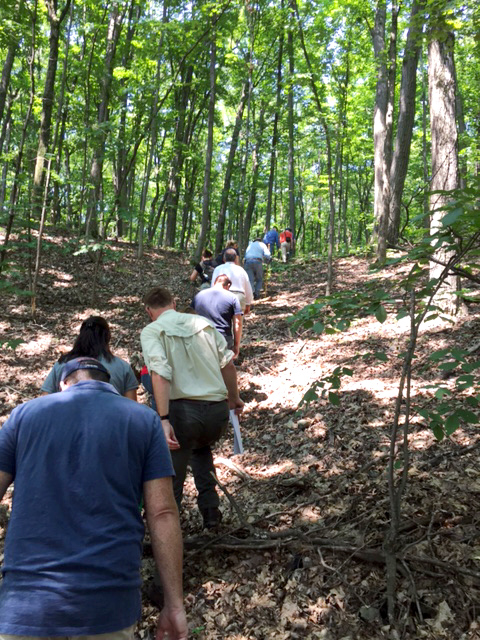After years of negotiations between multiple parties, the Conservancy obtained the Flint Mine Hill chert quarry site. The site is located on the top of a large hill consisting of Normanskill shale and chert near Coxsackie, in southeast New York. It contains evidence of prehistoric quarrying dating from the Paleo-Indian through Woodland periods. The site was listed on the National Register of Historic Places in 1978 as part of the Flint Mine Hill Archaeological District. The hill is nearly a mile long, with tool knapping areas and quarry pits located throughout the landscape. Several freshwater springs are found on the slopes of the hill.
The site was first documented by William Beauchamp of the New York State Museum as early as 1900, and it was known by the locals, who collected artifacts from the fields surrounding the site. Some of these individuals showed their collections to staff at the New York State Museum, prompting a formal investigation of the site by State Archaeologist Arthur Parker in 1924. Parker reported numerous quarry pits and large amounts of lithic debris that amounted to “hundreds of train loads.” Many of the quarry pits had been dug deep into the deposits to expose pockets of high-quality chert.




